Category Archives for "Shakespeare"

It is an absolute pleasure that I have joined a group of a-m-a-z-i-n-g secondary bloggers to bring you the 12 Days of December Blog Hop and Giveaway! So grab a cuppa, snuggle up, and enjoy. Click here to find out more about the 12 Days of December Blog Hop.
So – here’s my seasonal serving of Christmas cheer!

Christmas is a timing of giving, right?! But it doesn’t have to be about spending money, sometimes a hand-made-with-love gift is worth more than anything store bought. So in my classroom (with my pretty cynical London teens) we make and give cards to teachers, support staff, dinner ladies, traffic wardens – in fact any adult in our school.
These FREE card templates are super cool, slick, and modern design. If your teens aren’t interested in Christmas cottages or cuddly Santas, then these FREE card templates are just for you and your students. There are 10 designs to download and print yourself >>>here<<<. Just print, give to your students, color and spread some Christmas joy!
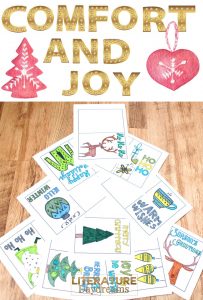 We color them for teachers in other subject areas to say thank you. We color them for support staff and dinner ladies, who are always there with a smile and a joke. We color them for our friends to remind them we care. We color them for family because nothing’s better than a homemade gift – right?! And finally we color them for the residents in our local area, we drop them through their letterboxes to wish them the best of year.
We color them for teachers in other subject areas to say thank you. We color them for support staff and dinner ladies, who are always there with a smile and a joke. We color them for our friends to remind them we care. We color them for family because nothing’s better than a homemade gift – right?! And finally we color them for the residents in our local area, we drop them through their letterboxes to wish them the best of year.
This year, for the first time we will color them for the elderly residents of a local care home. Many are alone, many will have no visitors at all over Christmas. This year, we hope to bring them joy.
If you love the idea of creating Christmas Cards with your students, then check out this hilarious Christmas Card poem writing lesson. Teach your class anaphora, anadiplosis, epistrophe, and other rhetorical devices to create some classic festive card poetry.
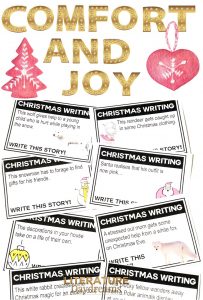 Christmas is a fantastic time of year for creative writing activities. Here are a few of my favorites!
Christmas is a fantastic time of year for creative writing activities. Here are a few of my favorites!
The UK department store, John Lewis, is famous in England for having wonderful, cosy, uplifting, heart-warming, and generally all-round wow Christmas TV advertisements.
These adverts make wonderful writing prompts. Just show the advert to your classes and give them the writing prompts below! Here are my favorites:
https://www.youtube.com/watch?time_continue=50&v=M0zZScVSMEwWriting prompt: describe someone struggling to wrap an awkward present.
Make sure you watch this one to the very end! Writing prompt: describe that ‘bed-time on Christmas Eve’ excitement.
https://www.youtube.com/watch?v=iccscUFY860
Writing Prompt: Write a narrative where a wild animal brings unexpected joy at Christmas!
If you enjoy these writing prompts, then you might also like my Christmas Fun Writing Prompt Bundle.
If you are looking for something a little different for your Literature classroom this Christmas then perhaps you could host an Elizabethan Christmas. If you teach Shakespeare at this time of year, then this question might have popped into your brain!
Well, in short – I would say – an Elizabethan Christmas was chaotic fun, social, and full of beauty. An easy way to introduce your students to this would be to pose the question: “what did everyone eat for Christmas dinner in 1588?” Let them guess. The answer is not surprising and surprising all at once. Goose. Goose wasn’t the usual meal for everyone at Christmas time in those days. But in the year 1588, by Royal decree, everyone in England was to eat goose. Why, I hear you ask? Because a goose was the first animal that Queen Elizabeth I saw after hearing that the Navy had defeated the invading Spanish Armada! (Thankfully it was a cat or a horse!)
This host an Elizabethan Christmas set contains hours and hours of fun. The centerpiece – or showstopper – is group work activity where each group brings a gift to your Christmas celebration. They research, and then make an object to represent six elements of Christmas for the Elizabethans. The Christmas Candle, the Yule Log, the Dawn Mass, the Feast and more.
Your students will work together, learn a great deal about an Elizabethan Christmas, they will have fun, and build community in your classroom. What better way to bring comfort and joy this Christmastide!
Don’t forget to find to check out what treats my secondary seller friends have in store for your this season. Click here to find all the details. A-n-d don’t forget to enter our Giveaway for a chance to win some amazing prizes!

*I send emails with teaching tips, tricks, and free resources to my subscribers regularly. I value your privacy and you can learn more about how I handle your data in our private policy. You can unsubscribe at any time.

Engage and inspire your students this festive season by hosting an Elizabethan Christmas in your classroom. Don’t worry – no cooking required!
Interesting isn’t it?
Every time I teach a Shakespeare play – I find myself wondering “would they have done this in Elizabethan times?” My questions usually run to “did they play football?” (the answer is yes, it was called Gameball and was more violent than you can imagine) or “did they have oranges then?”(the answer is yes again, although only the very rich would have been able to afford them, they also had melons and pomegranates).
Last year in the run up to Christmas, I happened to be teaching a number of Shakespeare plays. By sheer luck my brain was stuffed full of the Elizabethans and so it wasn’t a surprise then when this question wormed its way in: “what was an Elizabethan Christmas like?”
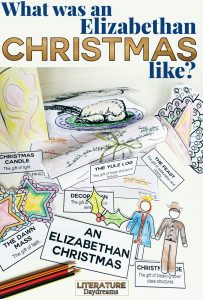
If I had to sum up an Elizabethan Christmas in 3 words, I would choose: fun, collegial, symbolic.
Fun meant food and games and frivolity. The festive season for the Elizabethan was the moment in the year where the hard work of life ceased and every man, woman, and child celebrated the festival of mid-winter.
Collegial and shared celebrations were the norm for all. At this point of the year the rigidity of social class structures dissolved. Noble man and peasant would stand side by side to share in Christmas cheer.
Symbolism and ritual were also the hallmark of this season. The Christmas Candle, the Yule log, Wassailing, and the 7 course banquet all played a role in making Christmas truly spectacular period for the Elizabethans.
So how can you bring some Elizabethan fun into your classroom?
Read Thomas Tusser’s poem “Christmas Cheer” as an introduction to Elizabethan Christmas festivities and perhaps even study some Elizabethan Christmas Carols in your lessons.
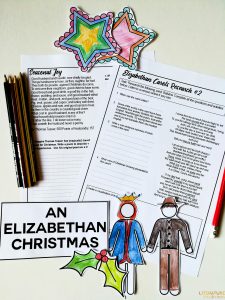 My “Host an Elizabethan Christmas” set includes Tusser’s poem along with other authentic texts describing an Elizabethan Christmas. It also includes 4 Elizabethan carols for your students to read, understand, and explain.
My “Host an Elizabethan Christmas” set includes Tusser’s poem along with other authentic texts describing an Elizabethan Christmas. It also includes 4 Elizabethan carols for your students to read, understand, and explain.
Create a beautiful Christmas community in your classroom with this fun and informative group work task. Here’s how it works:
In groups, students learn about the different elements of an Elizabethan Christmas (for example Christmas decorations, or the Yule Log). They then have 2 creative tasks to share with the class:
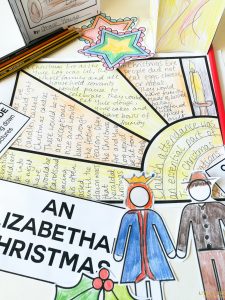
Everything you need to set up this group work activity is included in my Elizabethan Christmas pack. It is almost as easy as print and go (you just need scissors, glue, colors and you are done!)
Once the groups have made their gifts, they can give a presentation covering what they have learned and this foldable mini-book is a great place for students to record their new knowledge.
This set also includes:
This fun and engaging set contains 3 days+ of activities and will bring some hilarity, joy, and a lot Christmas history into your classroom. Click here to go straight to this set.
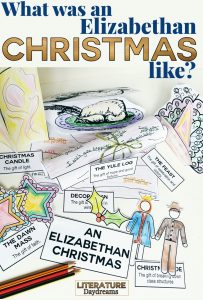

As we get towards September, I know teaching Macbeth is just around the corner. Again. Please don’t misread me, I LOVE teaching Macbeth. It’s almost my favourite Shakespeare play to teach (see my post on teaching The Tempest).
I teach Macbeth every year and every year I find I l-o-v-e it all over again! In my class, there is no room for a quick trot through the play. My students all sit an examination on the play at the end of their 2 year English Literature qualification. We have to know the play and know it very well. Each year I try to add something new to my Macbeth armoury.
Here are 3 ideas that I used this year to take my teaching of Macbeth to the next level!
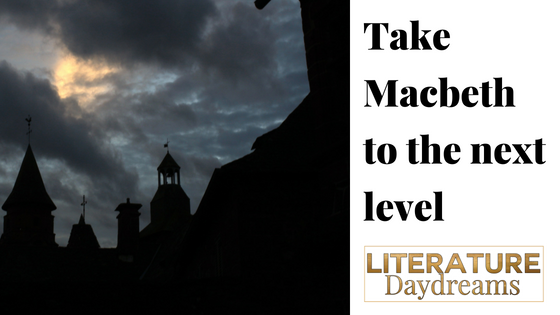
Raphael Holinshed was an English chronicler (similar to a historian today) and it is his chronicle of English history that was Shakespeare’s main source for the play Macbeth. Holinshed published two ‘complete histories of England, Scotland, and Ireland’ in the years 1577 and 1587. Each publication holds a large and comprehensive description of the history of these three nations.
Holinshed’s version of the story of Macbeth describes the reign of King Duncan and shows Macbeth to be a bloody dictator. It also included a woodcut illustration of the three witches that presents them more as nymphs or fairies, and less like the dark, genderless creatures in Shakespeare’s play. You can find out more about Holinshed and his chronicles here at the British Library site.
I have included resources for Holinshed’s history in my Macbeth unit on TpT. If you’re curious about what’s included you can find it here!
How do I use Holinshed in the classroom?
It is very simple, we have a short extract that we read directly from Holinshed (like the one below). We read it directly in Early Modern English (Elizabethan English) – you can talk to students, if you feel like it, about this transition moment in the English language. I love that Holinshed, like Shakespeare, shows both the old styles and new styles in his writing.

So somewhere around the end of Act 4 and the beginning of Act 5, we read a page from Holinshed, describing Macbeth’s later reign (remember Macbeth was actually King of Scotland for 17 years). We chuckle at the funny spelling and words.
Then we talk about the differences between Holinshed’s description of Macbeth and Shakespeare’s one. Holinshed generally comes out the winner because his presentation of Macbeth is bloodthirsty to the extreme.
After that, I ask my students to discuss the play by referencing Holinshed’s history. I might use sentence starters like:
The year that Shakespeare wrote Macbeth was a truly spectacular year for English culture and politics. Not only did London see the first performances of King Lear, Macbeth, and Antony & Cleopatra in that one year but England was rocked, almost constantly by political intrigue.
Let’s start with the obvious:
I have a long post already about how I teach Shakespeare meter and rhythm. You can read it here. I use many of the same strategies when I teach Macbeth, but I can never pass up the opportunity to add a little piece to my metrical teaching.
Here are a few ideas that I love in Macbeth:
If you’re curious to learn more about how to teach the meter and sound patterns in Shakespeare then do read my other blog post and download the free resource.
You can also see my complete Macbeth unit by clicking on the picture below:
Finally if you would like to receive free Literature and Writing teaching ideas straight to your inbox, then sign up below!
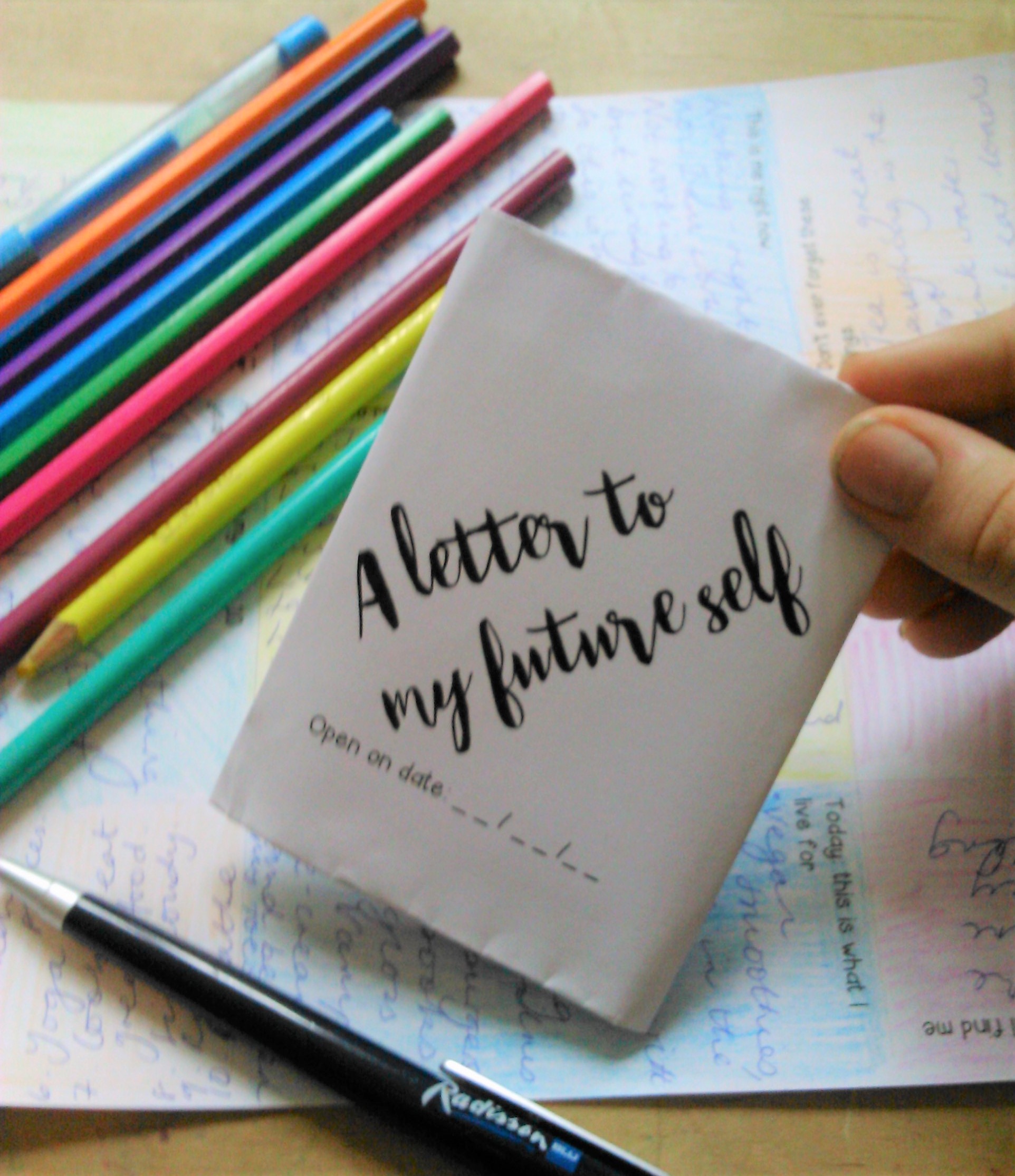
Sign up below to receive regular emails from me jammed packed with ELA teaching tips, tricks and free resources. Also access my free resource library!
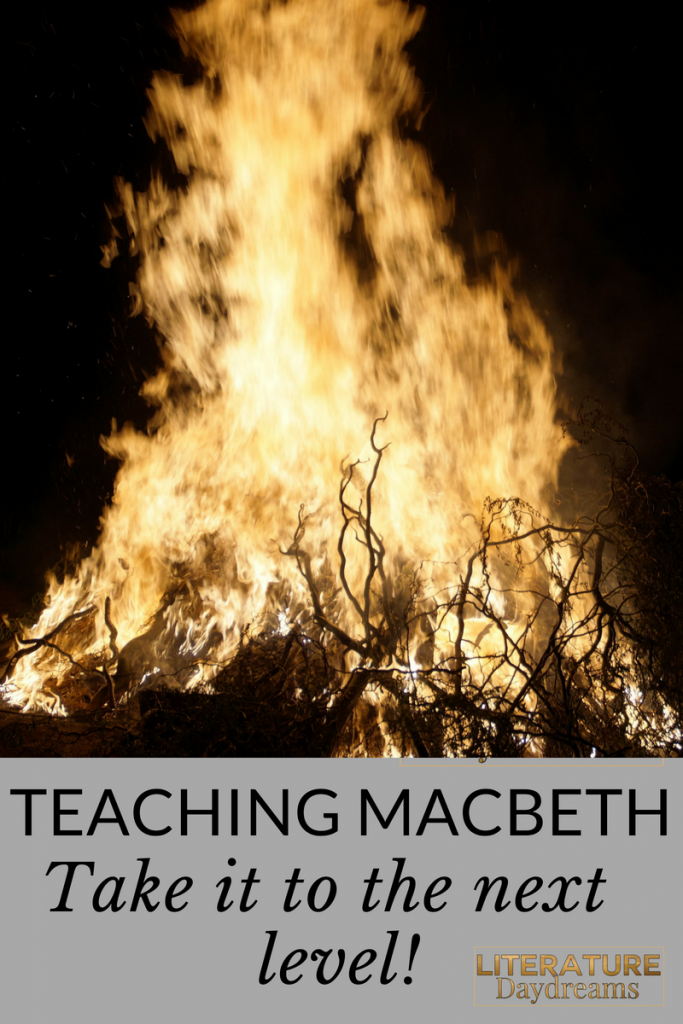
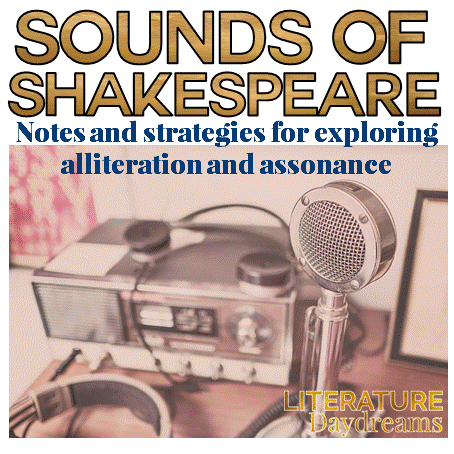
When students first begin studying Shakespeare, we spend most of our time focusing on understanding the language, talking about the characters and events, maybe even discussing the themes. What do we do when our students are capable of going further? What’s the next step in analysis and exploration? Well in answer to that question – I wanted to develop a bit on my last Shakey blogpost – and give you a little freebie to help.
My first stop, after we have moved on from comprehension and inference, into analysis is to focus on the Sounds of Shakespeare. His work after all was written to be performed and this element is essential to our understanding of it. It is the performance of his words that allows us to see and to hear the emotion, the performance is where interpretation becomes more fluid, less set. We’ve all seen this FB post:

Despite how easy it would be if the meaning Shakespeare’s words were fixed, they are not, and our most-able students are capable of discussing this.
Often – for me – this discussion of sound begins with the most simple sound patterns: alliteration and assonance. Specifically these patterns were used (like rhyme) as an aid to memory, actors used these sounds to help them memorize their lines. The rhythm created by the use of these patterns enables the words to flow without having to actively or consciously think about what words come next.
As a lesson opener, write the beginning of a nursery rhyme on the board. Now if you teach a diverse bunch of kids, like I do, you will need to choose carefully. (Remind me to tell you about the time I assume all my students had read Goldilocks…) My starter goes something like this:
1. Write the words ‘incey wincey spider’ on your whiteboard.

2. Ask the class to dictate the rest. Then ask them when was the last time they actually remember saying this nursery rhyme? I guarantee – even for those with younger siblings – these teens are not going around singing nursery rhymes all day.
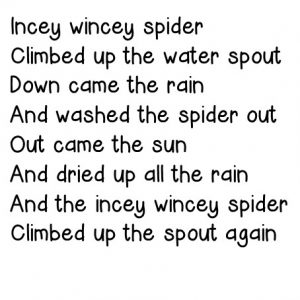
3. I then pose the question, why it is easy to remember, when we haven’t said it for years? I often say tell them at this point, that I lived at my old address for 8 years but today I can’t remember my postcode (zip code). Why can I remember this nursery rhyme?
The answer is often because of the rhyming words or repeated words, it is easy to remember. But then we look at little further.
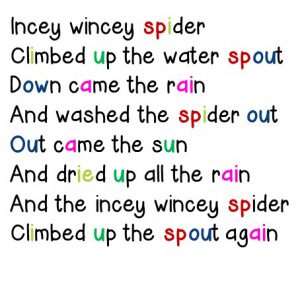
Yes there are a ton of repeated words – and this one reason why I use this particular rhyme, because sometimes one glaring technique (a powerful metaphor or a biblical allusion) can take away from everything else that is going on.
Look at the assonance and alliteration here – the long /i/ sound in ‘spider’ is echoed with ‘dried’ and ‘climbed’; the /ow/ sound in ‘spout’ is seen again in ‘out’ and ‘down’. These assonance echoes aid memory just as much as the rhyming of ‘rain’ and ‘again’. The alliterative elements are also easy to miss ‘spider’ and ‘spout’ – no rhyme, but for purposes of memory it works. I haven’t even highlighted the alliterative /d/ sounds throughout.
Once my students are comfortable with alliteration and assonance BUT before we dive into our Shakespeare play, I use extracts from famous Shakespearean speeches to force their focus onto sounds { see what I did there? force their focus }.
Why don’t I use the play we are currently studying? Well, I could I guess. But the problem is, my students know too much. They know all the characters and themes and once I ask them to start looking at the alliteration and assonance, they are going to get distracted by their knowledge! Wow! I never, ever, thought that would be a bad thing (and it isn’t really). I want them focus on the sounds alone. What do those sounds reveal? Without using prior knowledge, tell me about the sounds.
So download my freebie – right now – and that way you have it all ready to go. You can go through the info pages with your students as much as you like, then pick one of the coloring exercises for your students to complete, including is an extract from R&J and Sonnet 116.
Here students move from looking generally at repeated sound patterns to focusing on specific patterns and what they might mean. There are two explanation sheets included – the yellow one seen in the above picture takes students through the 8 types of alliteration and why they are used. Students can practise identifying alliterative patterns and then giving them meaning. The upside – anything using coloring pencils can’t be real work, right?
Ok. Coloring pencils away now. I am always super impressed with the ideas my students have following these exercises. They create real inferences, real analysis during these tasks. So to keep pushing them on, and building their confidence, we then move onto a simple annotation and exploration exercise.
Annotating a shorter passage (from Macbeth or Henry V) for alliteration, assonance and how these reveal emotion. These sheets give students an opportunity to develop their analysis and write up their ideas but in a low-pressure, low-stakes table. It again generates and aids great discussion.
Analyzing a whole speech – so if you are studying a Shakespeare play, then this would be the opportunity to introduce a speech or soliloquy from that play. For example – when teaching Macbeth, I might pre-teach these skills on the lead up to analyzing “Is this a dagger?” in Act 2, or with Antony and Cleopatra, I often use this as preparation for Enobarbus’ barge speech.
I’ve included part of Mark Antony’s funeral speech from Julius Caesar, as an example for you, partly because this is the first play we teach when our students arrive in Year 7 / Grade 6 at our school. I love the play and by this point in the play (three Acts in) my students are pretty confident with understanding the language and ideas.
So start with a tiny, plucky spider and finish with some fierce and confident analysis.
Teach on my friends.
Do sign up for my newsletter, you will gain access to my free resource library – I have put the answer keys for Sounds of Shakespeare on there, and much, much more!

I don’t know about you but there are some Shakespeare plays that I just love to teach. Macbeth, Antony and Cleopatra, and Hamlet all fall into that category. From start to finish my students and I are hooked on these stories. There also some plays that the kids love more than me – Romeo and Juliet. Don’t get me wrong, I cry every time, but there’s always something missing for me about R&J. I think it might be the lack of justice. It’s just all so damned unfair at the end.
And then there are some plays that I love for the sheer wonder and technical mastery displayed by this Colossus of the writing world. The Tempest is that play.
Before I tell you about what a humdinger of play The Tempest is, I want to share this golden nugget with you. Last summer I was honored to spend some time in the Shakespeare archive at Stratford Upon Avon. Amongst other wonders I came across this wonderful playbill for a production of The Tempest from 1857, isn’t is amazing?
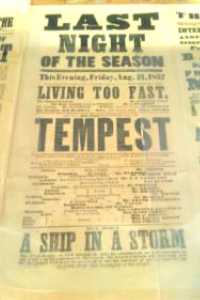
I said above that I love The Tempest for its technical mastery and although this is very true (in terms of high rhetoric The Tempest is genius) I also love it because it is a story of real, honest, dirty, and glorious human experience.
The Tempest takes many of Shakespeare’s conceptual obsessions and transports them and us to Island where we are trapped, and then set free. It is a story of family, of love, of power, of revenge, and of forgiveness.
And this is where our analysis of the play begins – with the big ideas:

If you take The Tempest out beyond its simple revenge narrative it is a tale of voyage and discovery, one in which some are subjugated and some are overlords. One where those who have power, will fight to keep it. It is a narrative of colonialism and how the wilderness and its savage inhabitants need civilizing.
Here The Tempest connects with the modern world. And often this is where my students gain their greatest enjoyment of the text, as we consider:
It’s funny, we never have to have the discussion about the ‘relevance of Shakespeare’ because with issues like this, there is no challenging that Shakespeare’s voice is timeless.
Our class discussions inevitability require some form of written response. When teens set the world to rights, their ideas need to be kept for prosperity. Our focus in here London at the moment is analytical essay writing (and I’ll get onto that in a moment) but there is a strong argument for allowing students the opportunity to explore their thinking in a more creative mode of writing first. We read like a writer, write like a reader, and then analyze like a reading writer.
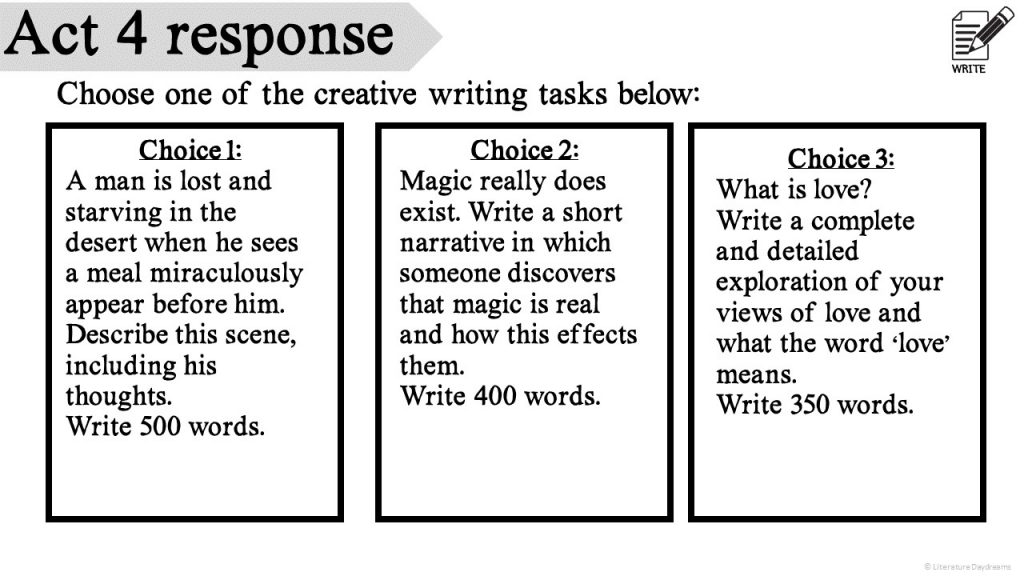
For me one of the utter joys of teaching Shakespeare is the confidence students gain in analyzing and interpreting his language. Here in London, our students take public examinations on Shakespeare at the age of 16 and at 18. In these exams they are required to write an essay where they dig deeply into Shakespeare’s language and form. As much as I would like to, it isn’t enough to spend all our time talking ideas. We have to roll up our sleeves and get stuck into the words and rhythms on the page.
Well, of course, I begin with the ideas in the play. We start out looking for evidence of the key themes and concepts in Shakespeare’s writing. Then we discuss their relevance at that moment, for that character.
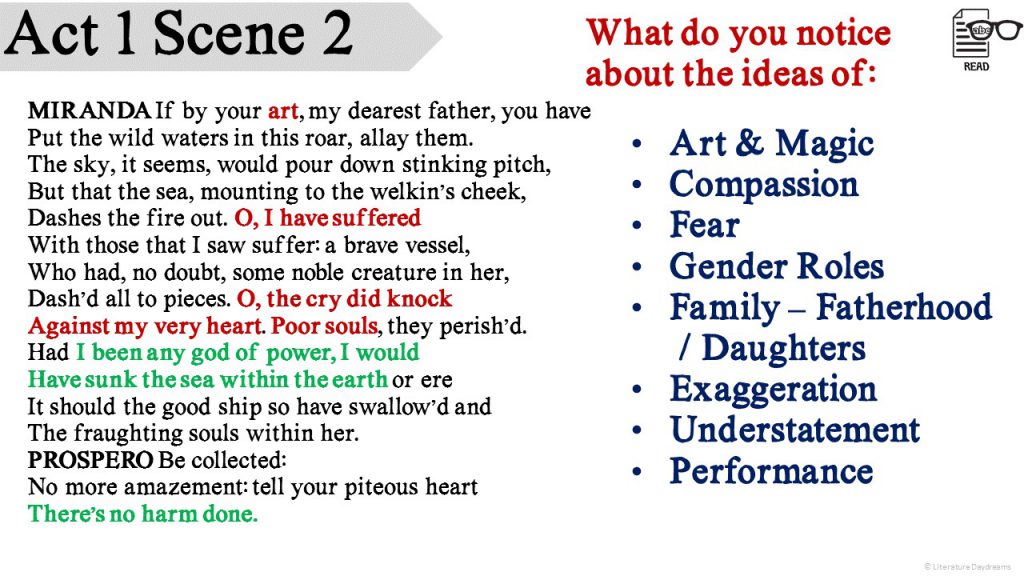
We might create a detailed close analysis of this speech looking at:
By starting looking for these universal ideas, students are distracted from the complexity of the language and begin to create analyses and inferences without even realising it. So how do I take their analysis to another level?
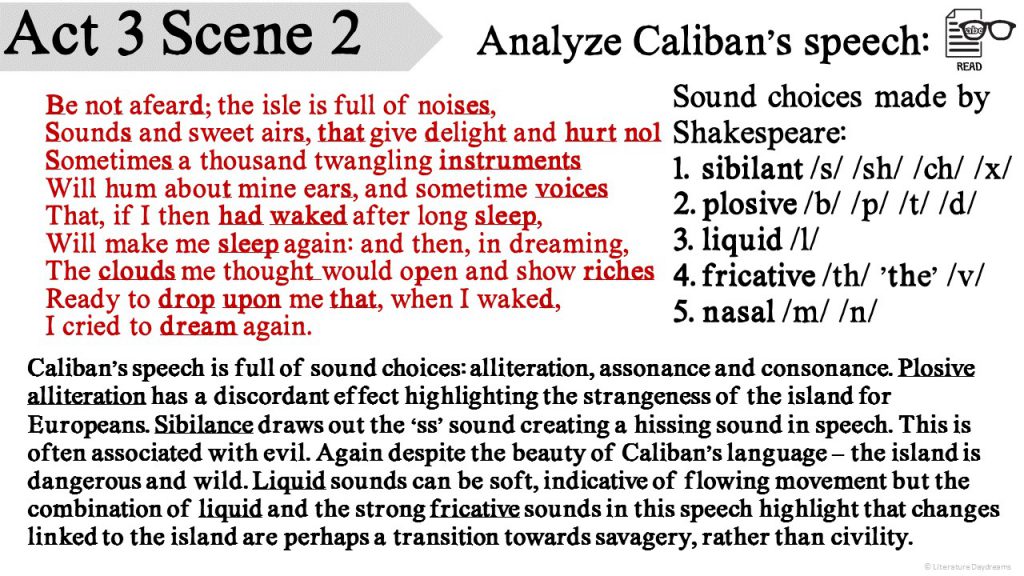
We use Shakespeare to teach a number of complex literary and rhetorical devices, he is well known for his use of rhetorical repetitions (anaphora, anadiplosis, epistrophe). Here students begin to unravel the effect that each of these has. We study alliterative repetitions, the effect of caesura and enjambment, antithesis, and any number of techniques. If you would like some help with teaching the Sounds of Shakespeare – then check my blog post here!
For us, it is essential that students can identify and explain the purpose of each of these. The example essay paragraph below shows the depth of understanding and engagement with ideas, character, language, and technique demonstrated by our students. It’s pretty awesome!
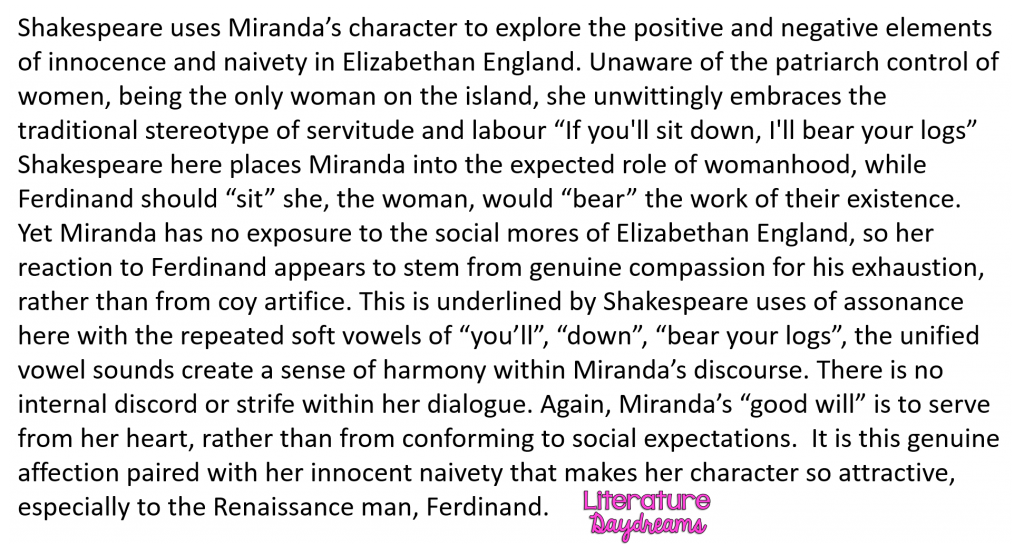
I know! I get it. That was a little bit too much. Do you ever have a phrase that you use with kids and for some reason they latch onto it and use it again, and again, and again? Well, “the social mores of Elizabethan England” became that phrase for me!
Here’s why, the final and almost the most important thing we do when studying Shakespeare is to place the text within its moment in history. And I don’t mean vaguely “people in Elizabethan times didn’t wash and that’s why Shakespeare makes jokes about people smelling”.
I mean with deep, detailed and in-depth knowledge of the era. The whos, the hows, the wheres and the whens.
Again how can any kid argue that history is boring and irrelevant when my starter question says:
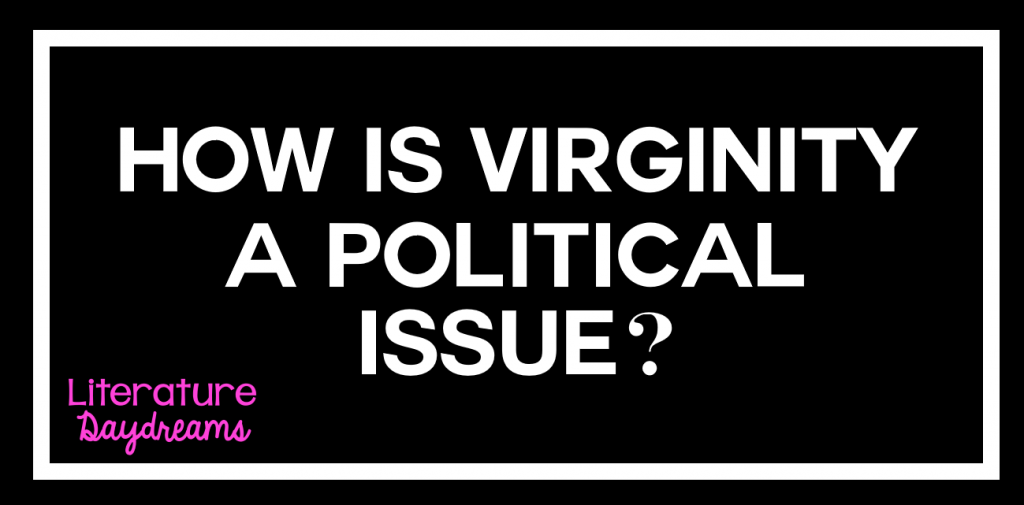
Welll, my friends, I’m glad you asked. Here’s one gem we cover, it quite a lot of awkward detail!
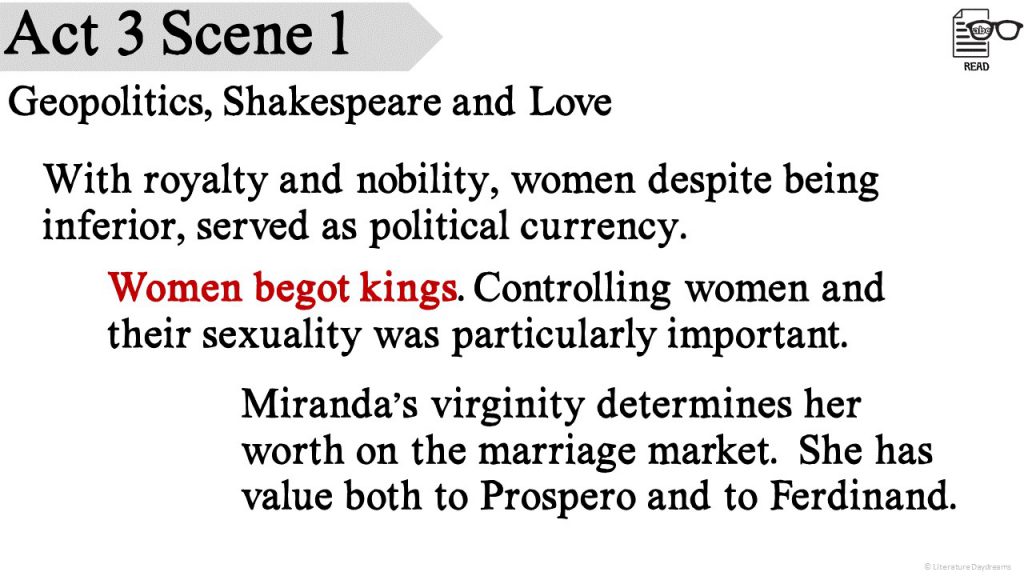
And it’s not just this – we study Elizabeth I and how she was both an awesome and unpredictable monarch. The unity and instability created by a unmarried woman on the throne catapults England into the gender dialogue of the day. James I unifies England and Scotland – or does he/ – returning the ‘small and brutish’ (Thomas Hobbes) nation to rule by absolute monarchy. Add to this the Gunpowder plot, the Age of Discovery, the Inquisitions and Jesuit Equivocators, the age of Shakespeare was rife with political intrigue and conspiracy.
Read, act, enjoy Shakespeare but don’t be afraid to study it. For us, going way beyond the ordinary is what makes us love him.
If you would love to teach The Tempest using the resources I have included above (plus over 200 pages of other goodies) then you can find them all at my TpT store here. You can also see all my Shakespeare resources here. Annnd if you would like – sign up to my newsletter to catch more of my Shakey blogposts!

It’s not hard to love The Bard. This week, in the midst of Antony & Cleopatra, we discussed the revolutionary view that Shakespeare seemed to have concerned foreigners. While popular reports by explorers and military heroes of Elizabethan Era portrayed foreigners as exotic savages, Shakespeare revealed their humanity by giving them a power than seems absent in the western interlopers.
If you are interested in more insight into Shakespeare’s world have a look right here!